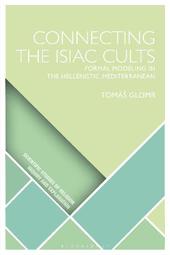
|
Connecting the Isiac Cults: Formal Modeling in the Hellenistic Mediterranean
Hardback
Main Details
| Title |
Connecting the Isiac Cults: Formal Modeling in the Hellenistic Mediterranean
|
| Authors and Contributors |
By (author) Tomas Glomb
|
| Series | Scientific Studies of Religion: Inquiry and Explanation |
|---|
| Physical Properties |
| Format:Hardback | | Pages:192 | | Dimensions(mm): Height 234,Width 156 |
|
| Category/Genre | Ancient Egyptian religion and mythology |
|---|
| ISBN/Barcode |
9781350210691
|
| Classifications | Dewey:299.312114 |
|---|
| Audience | | Tertiary Education (US: College) | |
|---|
| Illustrations |
10 bw illus
|
|
Publishing Details |
| Publisher |
Bloomsbury Publishing PLC
|
| Imprint |
Bloomsbury Academic
|
| Publication Date |
1 December 2022 |
| Publication Country |
United Kingdom
|
Description
Why did Egyptian cults, especially those dedicated to the goddess Isis and god Sarapis, spread so successfully across the ancient Mediterranean after the death of Alexander the Great? How are we limited by the established methodological apparatus of historiography and which innovative methods from other disciplines can overcome these limits? In this book, Tomas Glomb shows that while the interplay of different factors such as the economy, climate, and politics created favorable conditions for the early spread of the Isiac cults, the use of innovative quantitative methods can shed new light and help disentangle the complex interplay of individual factors. Using a combination of geospatial modeling, mathematical modeling, and network analysis, Glomb determines that, at least in the regions of the Hellenistic Aegean and western Asia Minor, the political channels created by the Ptolemaic dynasty were a dominant force in the local spread of the Isiac cults. An important contribution to the historiography of the ancient Mediterranean, this book answers the specific question of "how it happened" as well as, "how can we answer it beyond the limits of the established methodological apparatus in historiography."
Author Biography
Tomas Glomb is Assistant Professor of Religious Studies at Masaryk University, the Czech Republic.
ReviewsA convincing and very readable demonstration of how theories and methods from complexity science can enhance the study of the spread of ancient religions. * Tom Brughmans, Associate Professor in Classical Archaeology, Aarhus University, Denmark *
|